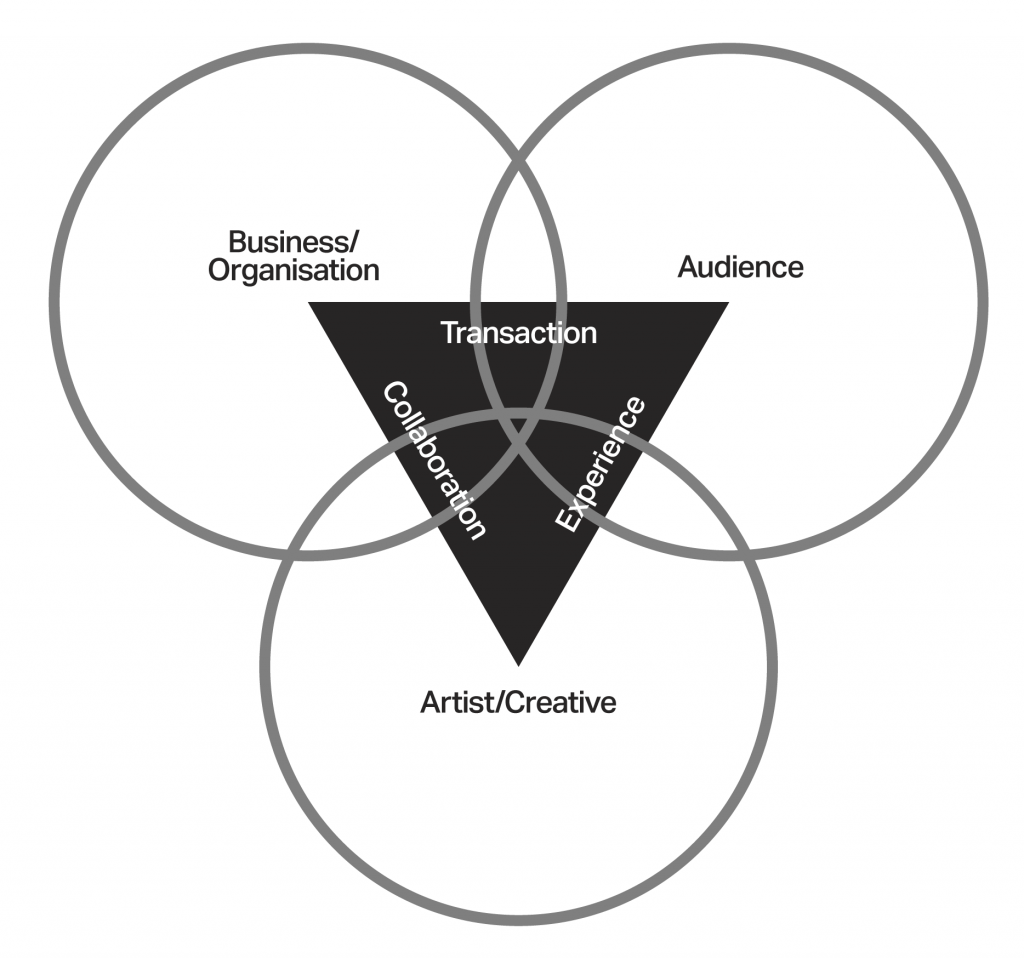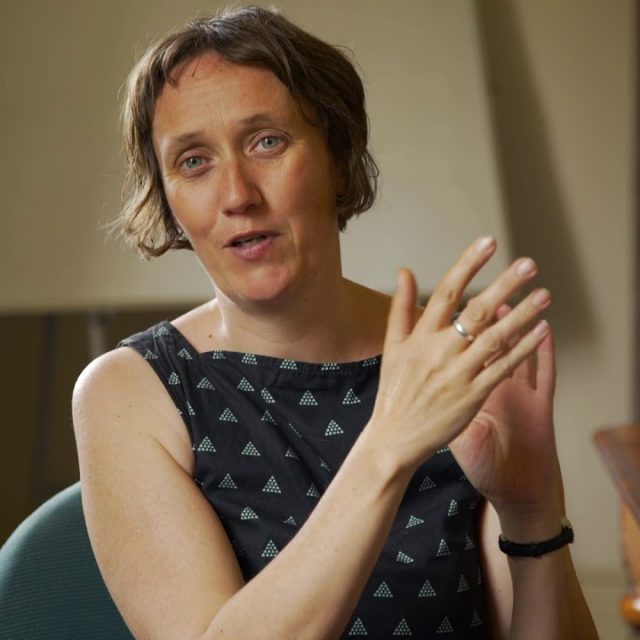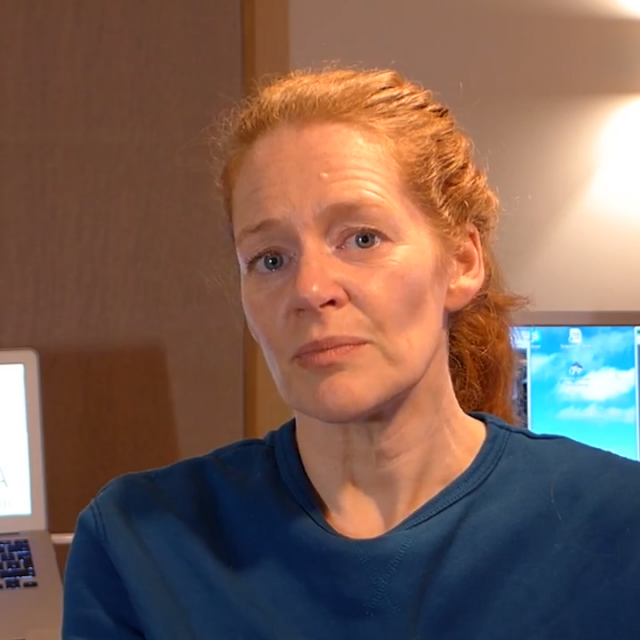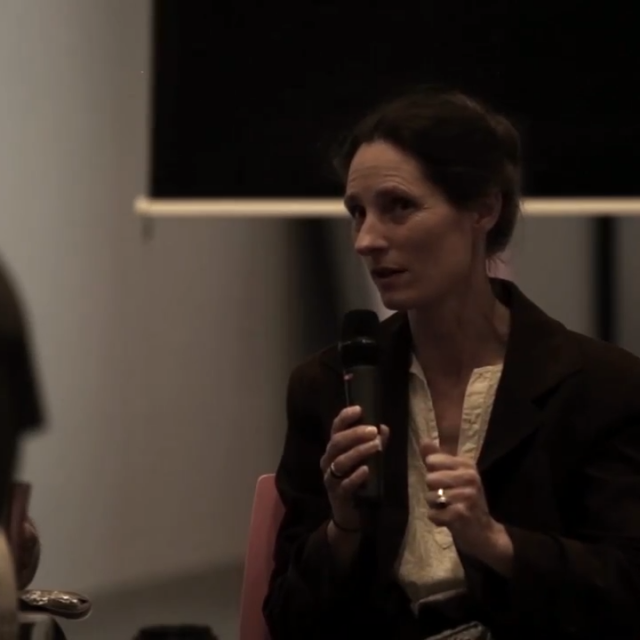Agile Opera Project Microlabs have continuously evolved and adapted, responding to project needs and requirements. We have incorporated diverse activities, including collaborative brainstorming, drawing and mapping exercises.
We briefly report here on Microlabs 1, 2 and 4.
Microlab 1
Microlab 1 focussed on introducing the project, its aims and ambitions, and, in turn, was a test of the Microlab structure itself. It included a 2 hour workshop facilitated by Greg More (CI) on mapping that examined the concept of a digital platform. This workshop was structured on the the three layers presented in the project’s ARC grant application:
- audience
- performance (artists)
- operations (organisation)
In the workshop participants were shown a series of digital platform ideas for context and discussion, including: social media networks (e.g. Facebook), the internet as physical infrastructure and digital protocols, art projects addressing privacy/intimacy through digital technology, and mapping space through Twitter data. Participants were asked during the session to reflect on these precedents, and respond to a series of tasks using post-it notes and comments to capture ideas related to the following questions:
- What is a digital platform?
- What do you want (or the audience) to take away from a digital experience?
A third task near the end of the workshop—using the same method—asked participants to consider questions regarding the current, near and future horizons of digital technology:
- What channels/technologies do you currently use to communicate & collaborate?
- What technology is available now, and could be utilised in the next 12 months, to create new forms of audience/performance connections
- In five years time, what ideas to do you think will shape how audiences and performers connect?
Ideas and comments generated were grouped and clustered by affinity and discussed as a collective.
The feedback from external participants about the timing and structure of this initial Microlab was very positive, and the intellectual capital resulting from the structure became apparent. At the concluding session of the day, the concept of ‘mapping’ flows and organisational operations was discussed a valuable activity to undertake at future workshops.
For future Microlabs, we resolved to integrate activities that bring ‘people into the room’ to map, draw and articulate ideas through mapping processes. It was also agreed that new research ideas emerging from Microlabs would be supported as activities between sessions, sometimes undertaken by guest researchers. For example, two clear ideas for further research and development emerged from Microlab 1 discussion and reflection:
- The identification of the need to explore Chamber Made’s physical (built environment) / code space, led to the commissioning of Alexia Maddox’s essay, A Social Science Reflection on the Built Environments of the Chamber Made Opera – From Physical Place to Code
- Mark Williams (participant) emailed Greg Hooper, “I wanted to ask from your neurophysics background about the nature of the perception of live events compared to the recorded, interactive experience.” This exchange became the seed of Greg’s essay on this topic, Some Brief Notes Toward a Developmental Perspective on the Experience of Performance in the Arts.
Microlab 2
Microlab 2—which focussed on Chamber Made as a organisation and how it connects with artists and audience—involved a workshop of ideas relating to audience using customer journey maps. Jeremy Yuille (then RMIT University lecturer) facilitated a 2 hour session with Greg More (CI) to generate journey maps for Chamber Made audiences. A customer journey map is a technique of mapping how a customer experiences your service or product by visually showing each touchpoint (connection) the customer makes with your organisation.
In this workshop, we broke into three groups to map how audiences connect with a range of different Chamber Made offerings: Salons, Performances, Little Operations. Initially we asked each group to think of and list as many audience types/groups that engage with Chamber Made operations. Using post-it notes, these lists were positioned on a wall and arranged by affinity (e.g., clustering of groups: family and friends, sponsors, production groups).
This audience collation was then used to aid the production of customer journey maps, with each group focussing on one of the Chamber Made offerings. This activity generated three diagrams that flow from left/right or top to bottom to indicate time, illustrating how audience members connect with Chamber Made at different times of a project or event. The three maps increased understanding of audience and organisational connections, and started to identify tribes/groupings and their loose or tight connections with CMO operations.
Microlab 4 – Agile Chambers
The industry workshop held on Thursday afternoon as part of Agile Chambers explored how external industry guests could work with researchers and Chamber Made to map relationships between audience, artists and organisation. Building on the experiences of past Microlabs, this workshop was less about using tools of affinity mapping or customer journeys, but more about using the ability of groups to make interpretive maps of how these relationships can be figuratively represented.
The mapping exercise used in this session brought the external industry guests into the project. By examining the connections between organisation, artists and audience, themes common to both industry and Chamber Made were explored. The groups collaboratively generated unique visual artefacts offering insights about the landscape that small-to-medium arts organisations need to navigate.
This session commenced with the following statement: “Today we want to map and unpack the tensions between audiences, creatives, and organisations.” A diagram was presented of how the organisation, audience and artists form a triangle, and the edges of this triangle are relationships that can be given thematics of: transaction, experience, collaboration.
Each of the three groups was assigned a relationship and a thematic (e.g., Relationship: audience/artists. Theme: experience) on which to focus, and then asked to undertake the following mapping activity: “Draw a map of the landscape. A map of collective of experience”.
For this exercise we knew that the people in the room could interpret the openness of the brief, and explore concepts with artistic confidence. The groups were encouraged to explore the contradictions, tensions, and affordances offered in their relationship and thematic pairings. And also focus on the connection between ‘live’ performance and ‘digital’ (Digiworks). Following initial introductions and discussions, the groups were given 45 mins to draw their maps.
The outcomes of this exercise lead to a rich set of approaches to the different themes:
Organisation/Audience: This group explored the idea that the audience is like an ocean. Using the metaphor of flows, lakes, rivers and currents, the group developed a spatial representation of a landscape, including islands and archipelagos, to unpack the different ways in which audiences connect with organisations. Conceptually, this group promoted the ideas that organisations need to consider what type of ‘flow’ created this connection, and recognise that concepts of ‘audience’ are now fluid and temporal depending on attention requirements and media platforms inherently dictated by the audience itself.
Artist/Audience: This group promoted the idea of creative works having viral or infectious potential. Drawing on visual metaphors of biological cells the group presented a series of interconnected cells that link artists and audience. A key takeaway concept was that artists look to ‘infect’ audience through providing a unique experience as means of transmitting ideas and concepts within society.
Organisation/Artists: This group created a diagram of the act of creating a work over time, and the personnel and artefacts that take form in this process. Read from left to right, or top to bottom, the diagram created by the group formed a virtual archaeology of a project, and how if one ‘digs’ deeper into the project history, the initial seeds, concepts, that brought people together around a project idea can be uncovered.
Photo credit: Pier Carthew










